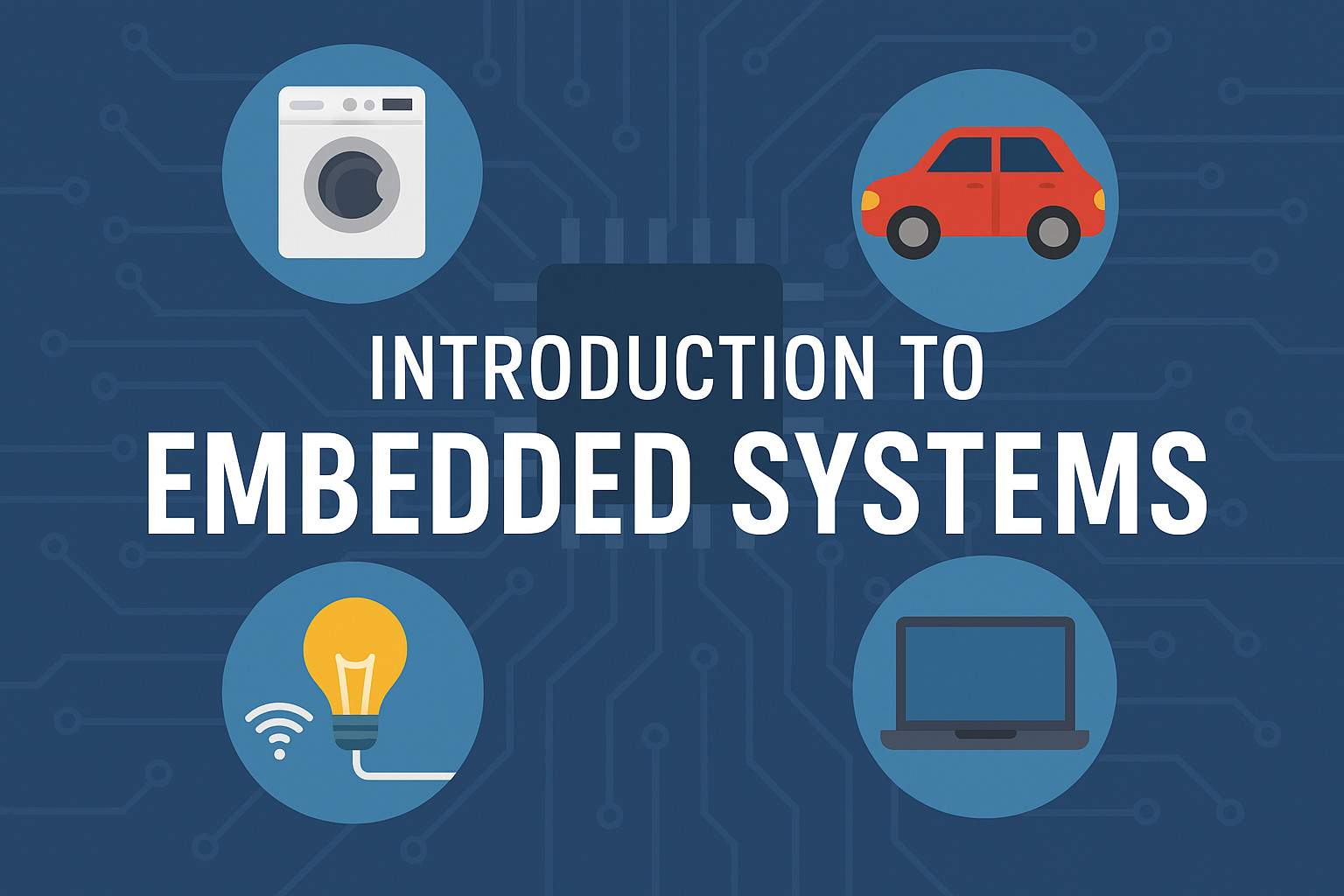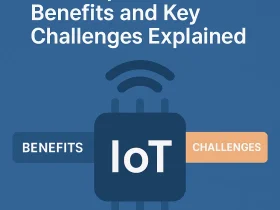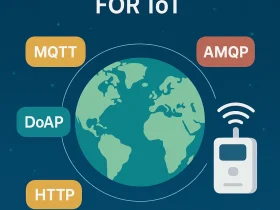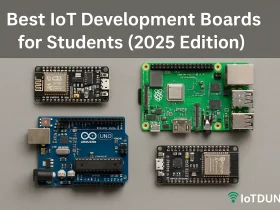The Complete Beginner’s Guide to Embedded Systems in 2025: Meaning, Examples, Applications, and Career Opportunities
What is an Embedded System?
An embedded system is a microcontroller or microprocessor-based hardware-software system designed to perform a specific task or function. Unlike general-purpose computers, embedded systems are dedicated to particular operations, often operating within larger systems to control functions, monitor processes, or perform computations.
In simpler terms, think of embedded systems as tiny computers that make your gadgets work smartly and efficiently — from controlling your microwave to running your car’s navigation.
Detailed Components of an Embedded System

An embedded system is made up of several critical components that work in unison to execute its dedicated operations. Each component plays a distinct role in ensuring the system’s reliability, responsiveness, and efficiency. Here’s a comprehensive breakdown:
- Hardware: This includes physical elements such as printed circuit boards (PCBs), microcontrollers, and interfaces. Hardware is the tangible infrastructure that hosts all other components and connections.
- Microcontroller/Microprocessor: These are the brain of the embedded system. Microcontrollers are compact ICs that integrate a processor, memory, and I/O peripherals into a single chip. Microprocessors, on the other hand, require external components to function but provide more processing power.
- Embedded Software (Firmware): Software embedded into ROM or Flash memory controls hardware operations. It includes drivers, control algorithms, and application logic tailored to specific tasks.
- Real-Time Operating System (RTOS): For systems requiring task prioritization and multitasking, an RTOS manages processes based on time constraints and deadlines, ensuring deterministic execution.
- Sensors: These devices detect physical parameters such as temperature, humidity, light, motion, or pressure and convert them into electrical signals that the processor can interpret.
- ADC (Analog-to-Digital Converter): Translates analog signals from sensors into digital values for processing by the microcontroller. Essential in systems interfacing with real-world analog inputs.
- DAC (Digital-to-Analog Converter): Converts processed digital data back to analog format to control devices like speakers, analog meters, and motors.
- Actuators: Act based on processed signals to perform a mechanical action. Examples include electric motors, solenoids, and relay switches that move or trigger operations.
- Communication Interfaces: Allow embedded systems to communicate internally or with external systems. Common protocols include UART (serial), SPI (high-speed serial), I2C (multi-device bus), USB, CAN (used in vehicles), and Ethernet.
- Memory Units: Consist of RAM (temporary volatile memory used during processing) and ROM/Flash (non-volatile memory storing firmware and static data). The type and size depend on system complexity.
- Power Supply Unit: Converts the incoming power to levels suitable for the embedded device. It includes voltage regulators and battery management systems, crucial for portable and energy-efficient devices.
- Timers and Counters: Facilitate event tracking, timing operations, signal generation (like PWM), and system clocking for synchronization purposes.
Each component’s design and interaction are meticulously tailored to ensure the embedded system meets performance, safety, and cost targets.: RAM for temporary storage and Flash ROM for program storage.
Real-Life Embedded System Applications

To help beginners understand the relevance and depth of embedded systems, let’s walk through expanded real-world scenarios. Embedded systems are present in nearly every sector and device you use daily — often without you even realizing it.
1. Smart Home Devices
Embedded systems in smart home tech provide energy efficiency, automation, and user comfort.
- Smart Thermostats: Automatically regulate temperature based on weather, occupancy, and user preferences.
- Smart Security Cameras: Detect motion, recognize faces, and send alerts via the cloud.
- Voice Assistants: Devices like Amazon Echo or Google Nest respond to voice commands and automate tasks using embedded AI processors.
2. Banking Systems (ATMs)
Embedded systems ensure reliable and secure operations within ATMs:
- Secure authentication of users through card readers and keypads
- Real-time communication with bank servers
- Transaction processing with fast hardware-based logic
3. Health and Fitness Wearables
Wearables integrate tiny embedded systems that:
- Monitor real-time health parameters (heart rate, sleep, stress, temperature)
- Use accelerometers and gyroscopes to track steps, movement, and calories
- Sync data with mobile applications or cloud servers
4. Mobile and Telecom Devices
Mobile phones consist of various embedded systems:
- Power Management ICs for efficient battery usage
- Baseband Processors for signal handling
- Sensor Modules for location tracking, proximity detection, and ambient light adjustment
5. Modern Vehicles
Cars use over 100 embedded systems to enhance safety, navigation, and comfort:
- ABS & ESC: Prevent skidding and maintain vehicle control
- Infotainment Systems: Deliver GPS, music, and connectivity services
- Parking Assist and Rear Cameras: Use embedded logic to ensure precise movement
6. Industrial Automation
In factories and industrial settings:
- Robotic Arms perform repetitive tasks with embedded control logic
- SCADA Systems monitor and control plant-wide operations
- Sensors and PLCs ensure optimal production with minimal human intervention
7. Smart Cities
City infrastructure now depends on embedded systems:
- Smart Traffic Lights adjust based on vehicle presence
- Air Quality Sensors monitor and report pollution levels
- Public Wi-Fi Hubs and Smart Meters use embedded processors for billing, access, and diagnostics
- Traffic light automation, waste bin monitoring, and air quality measurement use embedded systems connected via IoT.
How Embedded Systems Work Together with IoT

Embedded systems and the Internet of Things (IoT) are inseparable technologies in 2025. While embedded systems form the brains behind individual devices, IoT provides a way to interconnect and manage them remotely, often in real-time.
How They Work Together:
- Data Collection: Embedded sensors continuously monitor parameters like temperature, motion, pressure, or humidity.
- Processing & Control: The embedded microcontroller processes this raw data, performs logical decisions, and triggers actions.
- Connectivity via IoT: The processed data is transmitted via protocols (Wi-Fi, Bluetooth, Zigbee, LoRa) to cloud platforms, mobile apps, or other devices.
- Remote Monitoring: IoT dashboards allow real-time visualization and monitoring from anywhere in the world.
- Automated Responses: Based on the data, automated actions can be triggered (e.g., sending alerts, adjusting settings, switching on/off devices).
- Data Analytics & Machine Learning: Cloud servers can further analyze data from multiple embedded devices, find patterns, and use AI to optimize performance.
Real Example:
A smart irrigation system includes:
- Soil Moisture Sensor (Embedded System)
- Microcontroller that reads moisture levels and checks predefined thresholds
- Wi-Fi Module that sends data to a cloud-based mobile app
- Mobile App where the user can view soil stats and control the pump
- Actuator-controlled water pump that activates automatically if moisture is too low
Together, embedded intelligence and IoT connectivity create responsive, data-driven environments that reduce human effort, save energy, and increase efficiency in sectors like agriculture, healthcare, smart cities, and more.
Industries Heavily Using Embedded Systems
| Industry | Applications |
|---|---|
| Healthcare | Diagnostic machines, wearable monitors |
| Consumer Electronics | TVs, gaming consoles, smart speakers |
| Automotive | Infotainment systems, autonomous driving |
| Manufacturing | Robotics, automation, quality control systems |
| Energy | Smart meters, solar panel controllers |
| Agriculture | Soil sensors, smart tractors |
Future of Embedded Systems: What to Expect in 2025 and Beyond

The future of embedded systems is both exciting and transformative. As we move through 2025 and beyond, these systems will not just power simple machines, but drive innovation in critical global sectors. Here’s a deeper look at what’s coming:
Edge AI Integration
Instead of sending data to the cloud for processing, embedded systems will increasingly use on-device AI (Edge AI). This enables real-time decision-making and eliminates latency — critical for applications in autonomous vehicles, real-time surveillance, and robotics.
5G Connectivity
With faster and more reliable data transfer, 5G enhances the way embedded systems connect with other devices and the internet. This will empower ultra-fast remote monitoring, industrial automation, and autonomous systems with split-second responsiveness.
Augmented and Virtual Reality (AR/VR)
Embedded systems will become core components in wearable AR/VR headsets and smart glasses. These devices will need responsive embedded processors to deliver immersive experiences in fields like education, healthcare, design, and remote collaboration.
Environmental & Climate Monitoring
Next-generation embedded devices will power smart weather stations, pollution detectors, and precision farming tools. These systems will gather, analyze, and communicate ecological data to help mitigate climate risks and promote sustainable living.
Assistive Technology & Smart Healthcare
Smart prosthetics, fall-detection devices, hearing aids, and health monitoring wearables will evolve with AI-powered embedded systems. These innovations offer improved quality of life and enhanced independence for elderly and differently-abled individuals.
Industry 5.0 & Human-Machine Collaboration
Embedded systems will support more intuitive human-machine interactions, enabling collaboration between robots and humans in factories, logistics, and service industries. This aligns with the shift toward Industry 5.0, which emphasizes personalization and human-centric automation.
Embedded Cybersecurity Enhancements
As embedded devices become more connected, their exposure to cyber threats increases. Future designs will integrate hardware-level encryption, secure boot processes, and real-time anomaly detection using embedded AI.
Energy-Efficient Designs
Battery-powered embedded systems will incorporate advanced power management features, including energy harvesting, ultra-low-power MCUs, and sleep modes. This is especially important for remote and wearable devices that need to function for extended periods without charging.
In conclusion, embedded systems are on the verge of revolutionizing every aspect of our lives — from the devices we wear and drive, to the cities we live in and the medical care we receive. Their evolution in 2025 and beyond will be defined by intelligence, efficiency, and connectivity.
Career in Embedded Systems: Skills, Roles & Salaries
Key Job Roles
- Firmware Developer
- RTOS Developer
- Embedded IoT Specialist
- Systems Architect
- Embedded UI/UX Designer (for smart device interfaces)
Required Skills
- Programming Languages: C, C++, Python, Rust
- Tools: Keil, MPLAB, Atmel Studio
- Communication Protocols: UART, CAN, SPI, Bluetooth
- Soft Skills: Analytical thinking, real-time problem-solving
Recommended Degrees/Certifications
- B.Tech/B.E. in Electronics, Computer Science, or Instrumentation
- Certifications in ARM Cortex-M, Embedded Linux, IoT, RTOS
- Diploma in Embedded Systems Design or VLSI
Career Pathways
- Start as a trainee → Embedded Developer → Senior Firmware Engineer → Lead Architect
Salary Trends in 2025 (India Focused)
| Experience Level | Average Salary (INR/year) |
|---|---|
| 0–2 Years | ₹2 LPA – ₹4 LPA |
| 3–5 Years | ₹5 LPA – ₹10 LPA |
| 6–10 Years | ₹12 LPA – ₹20+ LPA |
High-paying sectors include automotive R&D, IoT startups, medical device firms, and aerospace.
Additional Embedded Systems Career Options
- Educator / Trainer: Teaching embedded systems in colleges or online
- Technical Author / Blogger: Sharing insights through articles or video content
- Startup Founder: Building niche embedded products for B2B or consumer use
Embedded Systems FAQs (For Beginners)
Q: Is embedded systems coding hard? A: Not really! If you’re comfortable with logical thinking and C/C++, you’ll enjoy it.
Q: Is embedded systems hardware or software? A: It’s a combination of both. You’ll write code that runs directly on hardware.
Q: Can I learn embedded systems without an engineering degree? A: Yes! You can learn through online certifications and project-based learning.
Q: Where can I start learning? A: Platforms like Coursera, Udemy, and NPTEL offer beginner-friendly courses.
Final Thoughts: Why Embedded Systems Are the Future
Embedded systems form the invisible brainpower behind everyday tech. As devices become smarter, faster, and more connected, the importance of embedded engineers and developers will grow exponentially.
Whether you’re looking to understand your smartwatch, innovate on smart city infrastructure, or start a tech career—embedded systems knowledge is a game-changer.
Explore Further:
- How to Use IoT Device Over Internet: A Beginner’s Guide
- Embedded Systems vs IoT: Key Differences
- Computer Networking for Beginners: The Complete Step-by-Step Guide
Follow & Subscribe
Subscribe to our YouTube Channel for weekly tutorials.










Leave a Review